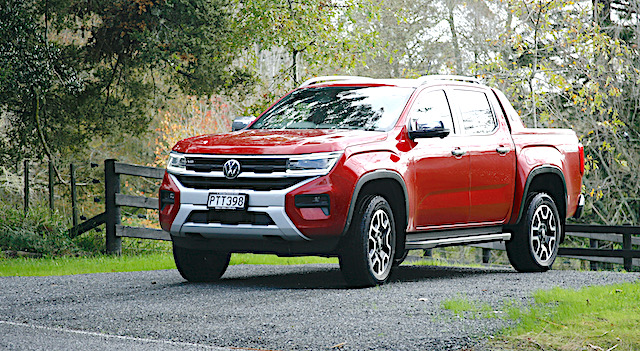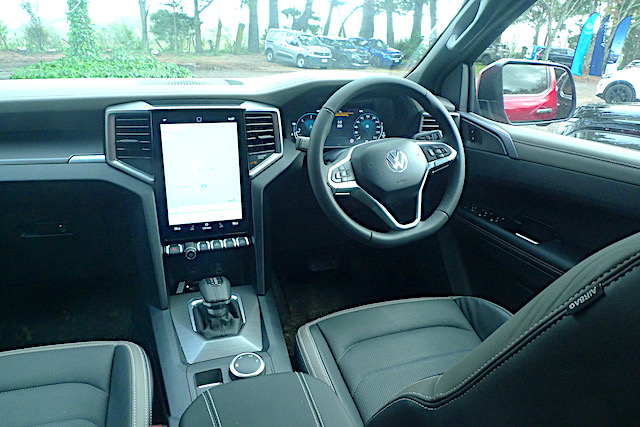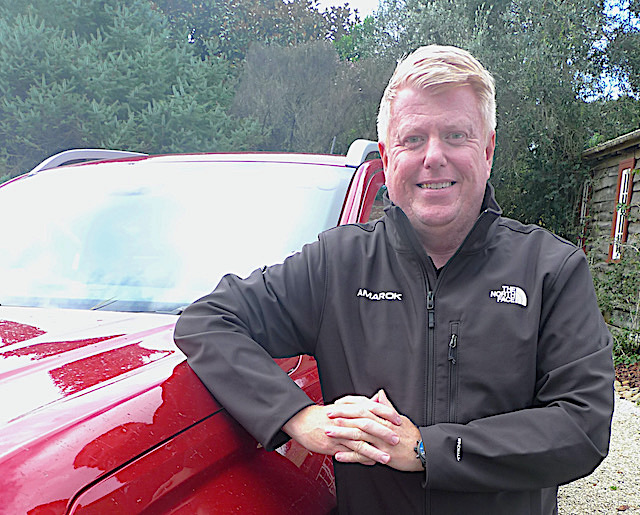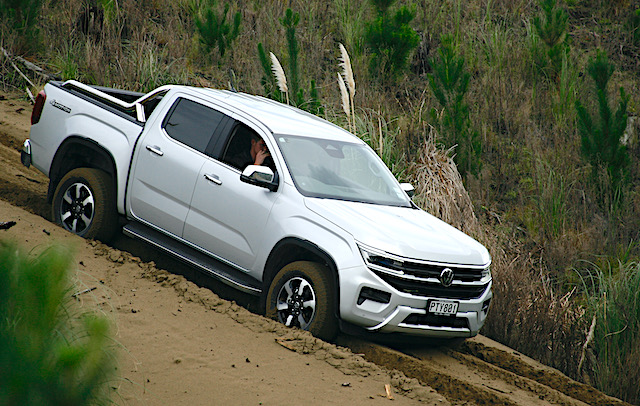
Popularity of the one-tonne ute in New Zealand isn’t going to decline anytime soon, despite Government attempts to erode its base with punitive tax levies on exhaust emissions.
For one thing, the ute is pretty much essential kit for farmers and tradies, in a nation largely focused on farmers and tradies. More to the point, to expect, for many years at least, a zero-emissions battery-electric alternative that is as flexible as the modern diesel ute is throwing pixie dust in the air.
Latest examples like the Volkswagen Amarok drive more like a well-sorted car than a truck and come with semi-autonomous skills, airbags for Africa, up-to-date connectivity, and every necessary electronic safety aid.
Amarok can even park itself, wirelessly charge your phone, read road signs, or activate a camera to see what’s ahead of you in gnarly conditions.

NZTA records might show that ute registrations have been slip-sliding over the past couple of years, but they still continue to represent 21% of annual new vehicle sales.
The 35,000 utes registered last year accounted for 21% of the total 164,813 new vehicles. The 10,000 or so utes sold so far in 2023 make up 21% of the 49,000 new regos. Further, sales of the top three utes in 2023 almost double those of the top three passenger cars.
Tax or no tax, Volkswagen NZ commercial manager Kevin Richards reckons on selling 850 variants of the new Amarok before the year is out. Each one will be taxed an average $3,220.00 before the Government’s revamped Clean Car Discount (CCD) scheme bites deeper on July 1.
After that, each Amarok will be walloped with an average $5,865.00 tax because its exhaust emissions exceeds the Government’s new 150gr/km C02 limit. Roughly, then, the tax grab on 850 Amarok sales between now and December 31 will be at the top end of $4.5 million.

Said Richards (above) of CCD: “The changes the Government has announced obviously impact the new vehicle category more than most. Doubtless there will be some impact (on sales) but hopefully not too much.
“We’d rather our customers didn’t have to pay more tax to the government, but we accept it’s the right thing to do in terms of bringing down overall C02 emissions from the New Zealand fleet.
“We’ll see what happens. I think it’s going to take a lot to end New Zealand’s love affair with the ute.”
The new Amarok hits the ground running with four variants: Life $65,000, Style $75,000, Pan Americana $88,000, Aventura $90,000. CCD tax is on top of the list price.

Life and Style share the same 2.0-litre diesel engines, Life using a single turbo and six-speed automatic gearbox, Style a bi-turbo and 10-speeder. Pan Americana and Aventura get boosted 3.0-litre V6 diesels running 10-speed ‘boxes. Braked towing across the range is 3500kg. Turning circle is 12.8m. Wheels are 17-, 18-, and 20-inch.
If the Amarok looks familiar it is because it was developed with the award-winning 2022 Ford Ranger as the donor car, the first of what will be ongoing collaborations between VW and Ford. Ford Ranger kit in the Amarok includes the mirrors, windscreen, windows, door pillars, screens, door handles, engines and gearboxes. So too the ladder chassis.
The rest, says VW, is what its own stylists penned, inside and out. For instance, VW engineers insisted as a nod to the 2010 original that the new Amarok carry over the squared-off wheel arches and width between them on the tray for a European pallet. The leaf suspension springs also had to sit outside the chassis rails. Rear brakes had to be discs.
It was a rainy day 13 years ago on farmland south of Auckland when the debut four-cylinder Amarok was launched on a mix of watery tracks and slippery, heavily grassed paddocks.

Amarok’s full-time 4Motion all-wheel-drive handled the conditions reasonably well. But its lack of low-ratio gearing and maximum 500mm wading depth meant drivers had to micro-manage the throttle to pick their way through some of the even less demanding sections on the property.
Not so the new Amarok and its deeper 800mm wading depth, this time on an even wetter day. Its 4Motion system is allied with high- and low-ratio gearboxes and various push-button electronic drive modes that made easy going of the worst surfaces on the 4WD sections of the Woodhill forest, north-west of Auckland.
Depending on the model, there’s part-time 4WD, selectable 4WD, automatic 4WD, all with the aid of a rear-differential lock and other safety stuff like downhill descent control riding shotgun. There’s 2WD for on-road going, too.
“The capability off-road of the original Amarok was under-rated,” says manager Richards. “But from a perception point of view, the security of now having the changeability between four-high and four-low, as well as rear-wheel drive, gives extra confidence to our customers.”
The 2.0-litre engine in entry-level Life delivers 125kW at 3500rpm and 405Nm from 1750-2500rpm. The twin-turbo in Style boosts oomph to 154kW at 3740rpm and 500Nm between 1750-2000rpm. Both V6 units in the Pan Americana and premium model Aventura generate 184kW at 3250rpm and 600Nm between 1750-2250rpm.

All you need to know about what the Amarok is up to on and off road is available via buttons on the steering wheel and toggles below the 12-inch infotainment screen amidships. The 12.3-inch horizontal screen behind the steering column can deliver all sorts of digital info. Both screens run VW-tailored software.
So which Amarok will be the go-to car? “A fortnight ago I would have said unquestionably Aventura as number one,” says Richards. “But having since put the car through the dealer network and seeing their reaction to the Style … they see a real opportunity with that four-cylinder bi-turbo engine.
“My feeling is the V6 will always have a staunch following among Amarok buyers, but with the four-cylinder product, Life gives us a new niche and Style is going to be a real winner.”
• Richards has already received an order or two for a petrol-powered Amarok. It will arrive later in the year, running the boosted four-cylinder 2.3-litre engine from the Ford Mustang. It delivers 222kW/452Nm via the same 10-speed auto, has the same 4WD system, and the same 3500kg braked towing capacity.
